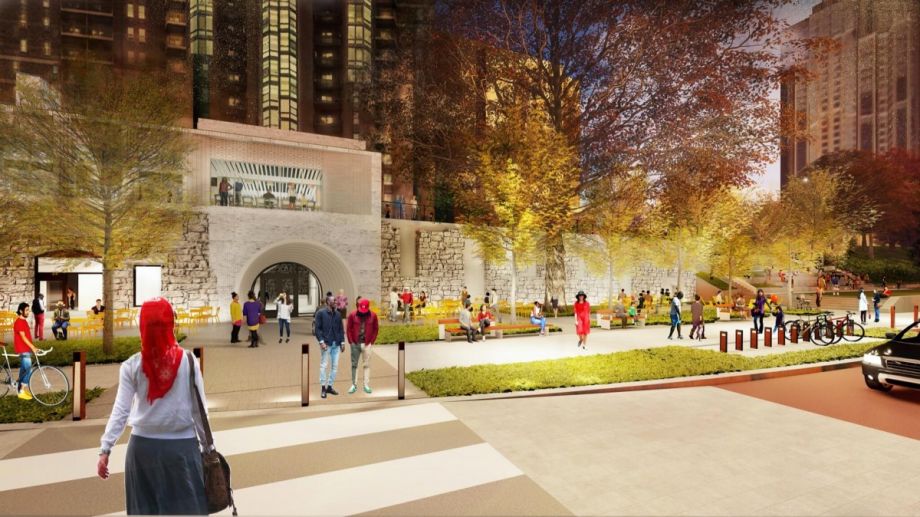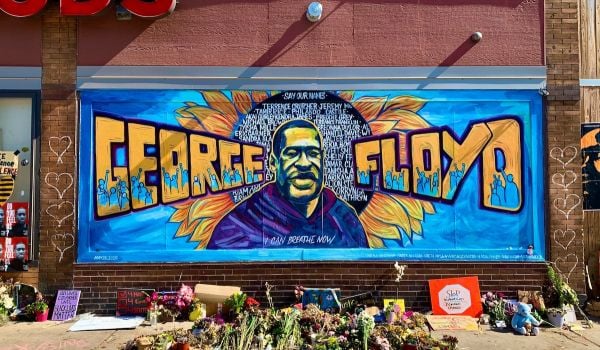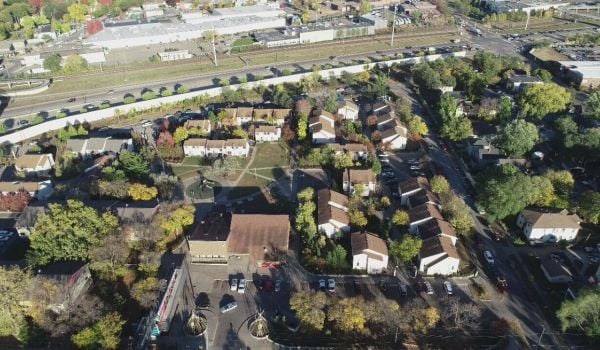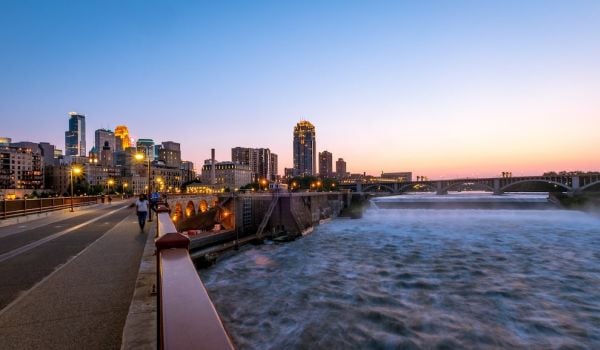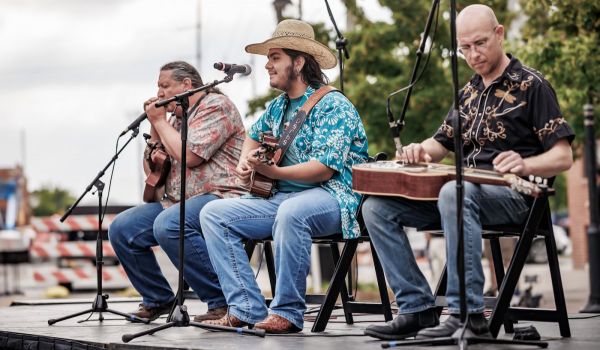Carved out by glaciers around 10,000 BCE, the Owámniyomni — post-colonially known as St. Anthony Falls — near present-day downtown Minneapolis have been a sacred place for Dakota people for centuries. Women would come from near and far to give birth on an eagle- and spruce-tree-filled island situated in the middle of the Mississippi River, encased by mist from the nearby falls. In the 1800s, the island was eroded by limestone harvesting before eventually being blown up by the Army Corps of Engineers in 1960 to make way for a lock and dam that was ultimately decommissioned in 2015.
Thanks to the Mill City Museum, the industrial history of the Owámniyomni has been well told and documented with its rich and far lengthier Dakota history largely absent — until now.
The Water Works park project aims to bring the indigenous history and relevance of the Owámniyomni to the forefront.
The pièce de résistance of not only the park itself but the indigenous storytelling it offers will be the first brick and mortar restaurant for a team of Native chefs, ethnobotanists, food preservationists and more, who have dedicated themselves to revitalizing Native American cuisine under the banner of The Sioux Chef. Founder, CEO and chef Sean Sherman, Ogala Lakota, launched The Sioux Chef in 2014 as a caterer and educator. His 2017 cookbook, The Sioux Chef’s Indigenous Kitchen, won the 2018 James Beard Award.
“This is a really sacred Dakota area, [both] the land and the water,” says Dana Thompson, the other member of The Sioux Chef’s executive team. “There’s just so much history to tell… so much of the colonial history has been told, but not the indigenous [history],” she explains, adding that, “tribes would meet [on the islands] as a place of peace where they’d [make] agreements.”
It was 2015 when the Sioux Chef’s executive team met Kate Lamers, a landscape architect with the Minneapolis Park Board, at the Owámni Falling Water Festival. Conversations eventually led to the Sioux Chef responding to an RFP for an indigenous food vendor and in the end they were selected to launch Owámni, which means “falling water” in Dakota.
Since then, Sherman and Thompson have been working with the park’s partners to bring the restaurant to life. “There’s going to be five times as much outdoor seating than indoor seating,” Thompson explains. “It makes sense coming out of this [pandemic] crisis. There’s going to be so much walking traffic and biking and eventually there’s going to be kayak parking,” she says.
To meet the needs of visitors, Thompson said the plan is to offer fast casual service during the warmer months so that visitors can “grab something to eat, enjoy the river, watch the birds, and imagine all the things that used to be there that aren’t anymore.” In the winter Owámni will also offer multi-course, delicately plated dinners at a higher price point. “There will be themes so that each one can be a form of education as well,” Thompson says.
The education elements of Water Works extend past the restaurant and into other facets of the park.
There will be an embedded pavilion and tree-shaded community steps as well as event spaces that community members can reserve, the vision for which includes the possibility of everything from indigenous cooking demonstrations to Dakota language classes and more. The park will also feature indigenous plants with placards explaining their culinary, nutritional, and medicinal uses in both English and Dakota as well as indigenous public art and fire pits designed to inspire community gathering.
The Minneapolis Park Board and partners have tried to make every detail right by listening to appropriate stakeholders. Engagement with the indigenous community led to a change from square fire pits to round ones, a shape that the Dakota people see as more fit for gathering in indigenous traditions.
“One thing we found was just how very slow and thoughtful and careful you want to be when really trying to empower people to bring their own culture forward on a project,” Lamers says. “For one thing, it’s really awkward to ask people to help do public art and programming around their own culture on their own land. It’s an awkward position to be in with the government… we have to acknowledge that and do the best we can at least in a project like this.”
Doing the best they can included having a Dakota employee interview Dakota elders on advice for how to navigate the process.
Another notable element of the park is that it will utilize a system of collecting rainwater from surrounding private buildings, filtering it, and using it for irrigation and grey water purposes like toilet flushing. An architect on the project is working with a Dakota artist who will be etching dots into the park’s wooden benches. Each dot, coming together in a flow to reference the river, will represent a gallon of reused water and include additional elements that will speak to the importance of water to life.
“There’s all this wonderful indigenous history that can really point us in the right direction for where we are as a species right now, especially coming out of the pandemic,” Thompson says.
UPDATE: We’ve clarified details about Owamni’s winter offerings, and updated Thompson’s quote about indigenous agreements being made on this land.

Cinnamon Janzer is a freelance journalist based in Minneapolis. Her work has appeared in National Geographic, U.S. News & World Report, Rewire.news, and more. She holds an MA in Social Design, with a specialization in intervention design, from the Maryland Institute College of Art and a BA in Cultural Anthropology and Fine Art from the University of Minnesota, Twin Cities.
Follow Cinnamon .(JavaScript must be enabled to view this email address)

